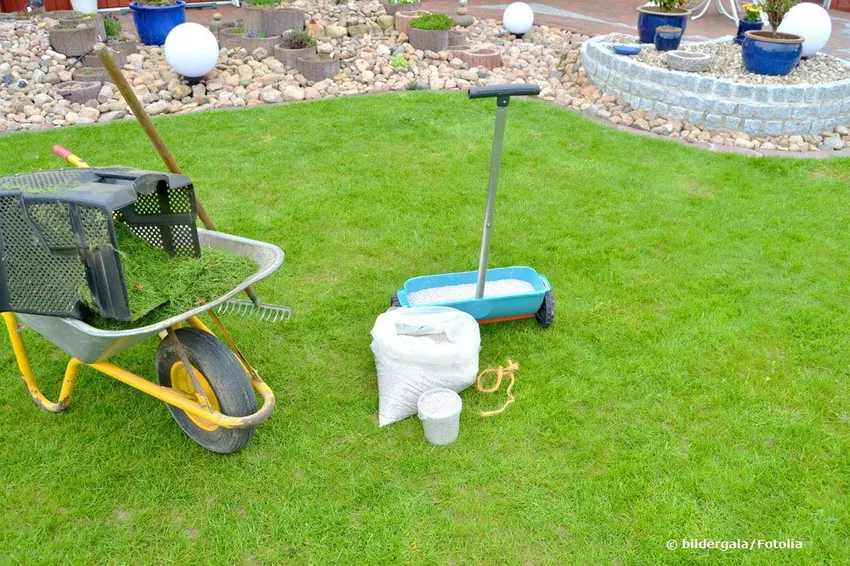
Fertilizing is an essential part of lawn care. The nutrients supplied form an effective basis for a healthy, dense lawn that is still attractive even after prolonged use. Many newcomers to the field of lawn care ask themselves when the earliest they should mow. If you mow too early or too late, this can have a negative impact on the germination and growth of the grass. You can find out when to mow the lawn here.
fertilize lawn
In order to be able to determine the right time to mow the lawn, you must first know how often you should fertilize the lawn. The fertilization time is a crucial point, because this disrupts the actual rhythm of lawn mowing, as there are significantly longer pauses between the individual processes. There are two typical fertilization times, which occur primarily in lawn areas that are only slightly stressed:
- Mid March to early April
- mid-August to mid-September
These two dates are the basic dates on which fertilization takes place. However, keep in mind that these can change due to the weather and the seasons, especially fertilization in spring. If you have heavily used lawns such as a playground or sports lawn, you must apply further fertilization every eight weeks after the first fertilization. These areas require more nutrients to continue to be used effectively.
notice: If you do not want to rely on chemical agents for fertilization, you can easily produce fertilizer yourself and do not have to spend a lot of money on it. Simply work well-ripened compost with a small proportion of animals into the lawn to provide the grass with sufficient nutrients.

Mowing the lawn after fertilizing
When you can mow the lawn at the earliest does not depend solely on the time frame for fertilization mentioned above. You can't just grab the lawn mower and mow the lawn after fertilizing. In itself, the appointment to trim the lawn is determined only by the fertilizer itself. Please note this process:
- fertilizer is distributed
- Fertilizer goes into the soil
- Fertilizer dissolves over time
- dissolved nutrients enrich the soil
- serve as food for the plants
Mow from point 3 onwards using this list. Just look to see if you see fertilizer or if it has completely dissolved. Only from this point on is it advisable to use the lawn mower, as you no longer run the risk of the process having a negative effect on the growth conditions of the plants.
notice: If you lime the soil in addition to fertilizing, you must also wait until all components have been absorbed by the soil. The best time is based precisely on the aspects mentioned so far, which also relate to subsequent mowing with fertilization.
Mowing for new or overseeding
The date for mowing the lawn after fertilizing is significantly postponed if you have to repair sections of the lawn or have to carry out a complete re-seeding. Since fresh seed has to germinate first and establish itself over time, you would be putting a lot of pressure on the area if you immediately grabbed the lawn mower.
Fortunately, you can determine exactly when to mow the newly seeded lawn. This depends on the type of lawn selected, as it must grow to a certain height due to the possible stress in order not to suffer from the lawn clippings. You should note the following growth heights:
- Decorative lawn: 8 to 9 centimeters
- Play or sports lawn: 7 to 7.5 centimeters
- Shade lawn: 10 centimeters
Depending on the seed selected, these heights can grow much faster and must therefore be mowed earlier. After that, you need to trim the newly laid lawn regularly to stimulate growth and effectively counteract bumps. Over time, a dense lawn should appear that is easy to walk on and has no gaps. Also, when trimming the lawn, always watch out for excess fertilizer. If this is still recognizable, you should definitely wait a little longer.
